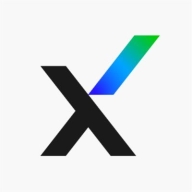

Trellix Endpoint Security Platform and Microsoft Defender for Endpoint are notable competitors in the cybersecurity space, focusing on endpoint protection. While both offer comprehensive features, their strengths vary. Trellix stands out with its extensive customization options and scalability, while Microsoft Defender excels in integration with the Microsoft suite, offering enhanced threat intelligence.
Features: Trellix Endpoint Security Platform offers central management and scalability, with key features including DLP, endpoint encryption, and advanced threat protection. Microsoft Defender for Endpoint integrates seamlessly with other Microsoft products, enabling informed threat intelligence, efficient use, and centralized management. Its integration with the Microsoft ecosystem is a significant advantage.
Room for Improvement: Trellix Endpoint Security Platform encounters issues with resource consumption and complex navigation, affecting client system performance. There is a need for improved AI capabilities and broader OS support like Linux and Mac. Microsoft Defender for Endpoint could enhance threat detection, improve third-party integration, and address complex management interfaces, which are challenging for non-technical users.
Ease of Deployment and Customer Service: Both products provide diverse deployment models ranging from on-premises to the cloud. Trellix has commendable customer service but experiences delays, particularly after their merger. Microsoft Defender facilitates deployment through integration with Microsoft 365, yet users sometimes face complications during initial setup. Microsoft's service is bolstered by comprehensive documentation and support networks.
Pricing and ROI: Trellix Endpoint Security is often viewed as costly, yet it delivers significant ROI due to reduced recovery expenses and effective threat mitigation via a subscription model. Conversely, Microsoft Defender for Endpoint frequently provides cost benefits when bundled within larger Microsoft licensing packages like Office 365, delivering strong value. Some users criticize the high costs associated with additional licenses, but many finds Microsoft’s packages cost-effective with bundled features.
Without detection and protection measures, organizations would face substantial payments and reputational damage, including the necessity to inform customers about data breaches, potentially leading to loss of business.
We have seen a return on investment when using Microsoft Defender for Endpoint, as it saves labor by reducing the need for staff to focus on it.
The biggest return on investment for me when using Microsoft Defender for Endpoint is the time saving.
We have observed tremendous return on investment after implementing Trellix Endpoint Security as it is a more cost-effective solution compared to other products.
Clients appreciate the solution’s customization capabilities and ongoing product improvements.
There are two parts: one is the encryption which is standard and no AI is needed, but the data protection part could benefit from AI to detect new types of data and protect it.
The Microsoft agent, who did not actually work for Microsoft, is one of the vendors that Microsoft uses for support, said, 'Just to set expectations, my lunch break is in an hour and I am going to go away then.'
The level-one support seems disconnected from subject matter experts.
I rate Microsoft support 10 out of 10.
The response time is a notable issue.
I would rate their customer service nine out of ten.
When we implemented Trellix Endpoint Security in their network, multiple malwares were detected.
We managed to scale it out in a short amount of time, with two months of planning and three months of implementation on 10,000 computers.
Microsoft Defender for Endpoint is scalable enough to handle various devices across environments, whether they are laptops, Android devices, or operating in hybrid environments.
Compatibility is its main feature.
I would rate the scalability of the solution as a six out of ten, indicating some challenges due to downtime requirements.
Trellix Endpoint Security is scalable.
I haven't seen any outages with Microsoft.
I rate Defender 10 out of 10 for stability.
Defender for Endpoint is extremely stable.
I would rate its stability as nine out of ten.
I would rate the stability of Trellix Endpoint Security as near perfect, close to ten out of ten.
I think it's stable enough; earlier it had glitches, but now it's stable enough.
Repeated interactions are necessary due to Level One's lack of tools and knowledge, hindering efficient problem-solving and negatively impacting our experience with Microsoft support.
In contrast, competing products offer reduced pricing for long-term commitments, which makes it difficult for us in that environment.
We use Microsoft partners to help govern the platform, and as part of an alliance, we want to gather data from each tenant and combine them for a complete view.
What needs improvement in Trellix Endpoint Security is the reduction of resource consumption by the scanning feature.
Improvements are needed in forensic analytics to detect specific vulnerabilities.
The product does not seem to be cloud-native.
That has been the trend we have seen with Microsoft lately—it is just getting more and more expensive.
Given our extensive Microsoft licensing, transitioning to Defender for Endpoint did not affect licensing costs.
It costs $15 per VM for the P2 plan, which is seen as affordable for customers.
The license costs are very reasonable, around 1,000 to 1,200 rupees per year.
Trellix Endpoint Security is cost-effective and provides excellent value for money.
My experience with pricing, setup cost, and licensing is good; compared to other tools, Trellix Endpoint Security Platform provides lower costs.
Defender for Endpoint's coverage across different platforms in our environment is pretty good. We have devices running Linux, Mac OS, Windows, iOS, and Android. It covers all of them.
Microsoft Defender for Endpoint provides a unified management interface allowing customers to manage their on-premises and hybrid infrastructures from a single pane.
One of the best features of Microsoft Defender for Endpoint is its database for identifying zero-day attacks or malware attacks.
Trellix Endpoint Security is a proven, robust, and cost-effective solution that protects the organization from different types of ransomware and attacks.
Including options like Application Control (formerly Solidcore), integrated monitoring, change control, DLP, and advanced threat protection, the solution offers comprehensive security.
The detection capability of Trellix Endpoint Security is higher than traditional antivirus solutions.
| Product | Market Share (%) |
|---|---|
| Microsoft Defender for Endpoint | 8.2% |
| Trellix Endpoint Security Platform | 3.7% |
| Other | 88.1% |


| Company Size | Count |
|---|---|
| Small Business | 80 |
| Midsize Enterprise | 40 |
| Large Enterprise | 92 |
| Company Size | Count |
|---|---|
| Small Business | 67 |
| Midsize Enterprise | 36 |
| Large Enterprise | 61 |
Microsoft Defender for Endpoint is a comprehensive security solution that provides advanced threat protection for organizations. It offers real-time protection against various types of cyber threats, including malware, viruses, ransomware, and phishing attacks.
With its powerful machine-learning capabilities, it can detect and block sophisticated attacks before they can cause any harm. The solution also includes endpoint detection and response (EDR) capabilities, allowing organizations to quickly investigate and respond to security incidents. It provides detailed insights into the attack timeline, enabling security teams to understand the scope and impact of an incident.
Microsoft Defender for Endpoint also offers proactive threat hunting, allowing organizations to proactively search for and identify potential threats within their network. It integrates seamlessly with other Microsoft security solutions, such as Microsoft Defender XDR, to provide a unified and holistic security approach. With its centralized management console, organizations can easily deploy, configure, and monitor the security solution across their entire network.
Microsoft Defender for Endpoint is a robust and scalable security solution that helps organizations protect their endpoints and data from evolving cyber threats.
Trellix Endpoint Security Platform offers essential features like centralized management, threat prevention, and encryption, facilitating seamless scaling and integration with other systems while prioritizing user security.
This comprehensive platform focuses on endpoint protection, antivirus capabilities, and malware defense. It enhances cybersecurity with data loss prevention, advanced threat detection, and AI-driven features for reliable protection without impacting performance. Central management and advanced reporting streamline integration and ease of use. Flexible policy deployment through the management console and its robust security measures, such as DLP and device control, further increase protection. Challenges include high CPU and memory usage affecting performance, a complex interface, and lengthy deployment. Third-party integration and Windows Hello support need improvement. Additional concerns involve improved threat detection and faster technical support responses.
What are the key features of Trellix Endpoint Security Platform?Trellix Endpoint Security Platform is widely implemented in industries such as banking and government for securing mobile and desktop devices. Its capabilities cover network security, device control, and remote access protection, catering to diverse environments by offering robust cybersecurity management against advanced threats.
We monitor all Endpoint Protection Platform (EPP) reviews to prevent fraudulent reviews and keep review quality high. We do not post reviews by company employees or direct competitors. We validate each review for authenticity via cross-reference with LinkedIn, and personal follow-up with the reviewer when necessary.